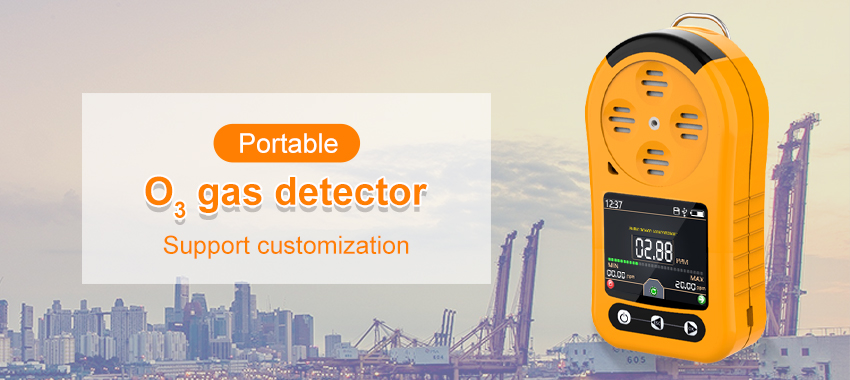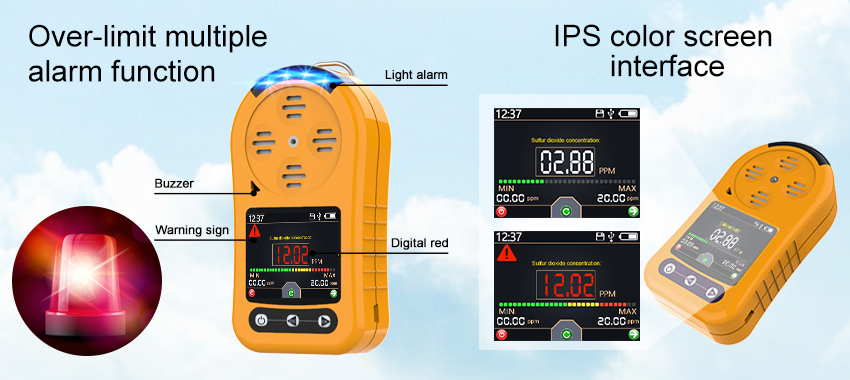Ozone meter measure the concentration of ozone in the air. These analyzers can measure ozone in the air to provide a parts per million (ppm) concentration.

Portable Ozone Meter shell is made of high strength engineering plastic and composite non-slip rubber, feel good, anti-fall, can effectively dust.
As an unstable gas, ozone has a unique nature that must be considered during detection. Ozone gas decays to form oxygen as a function of temperature, humidity, time, and air agitation. Therefore, it can be tricky to measure ozone in a consistent fashion.
Advantages of ozonoe meter
- Ozone is highly effective in killing bacteria, fungi, viruses, and molds both on surfaces and suspended in air.
- Ozone gas has been critical in many applications during the COVID pandemic.
- Ozone gas meters are used for two primary purposes: (1) to confirm ozone levels for disinfectant applications and (2) to protect from elevated levels of ozone exposure.
How are ozone gases measured?
Ozone is the measurement of ozone in the air with low-cost gas meters and ozone detectors. Usually, low cost detectors use electrochemical sensors. The voltage output of these galvanic cells is proportional to the ozone concentration. These batteries are useful in the ppm ozone concentration range.
More expensive ozone detectors use UV absorption technology. Ozone molecules in the air absorb ultraviolet radiation. When the photodetector measures a change in light absorption, the detector outputs a proportional electronic signal. Uv absorption is the best method for detecting low-level ozone in the parts per billion (ppb) range.
How Do Ozone Sensors Work?

Ozone meters, and analyzers employ sensor elements to detect O3 gas molecules. These sensors come in three varieties: electrochemical cells, semiconducting metal oxide sensors, and ultraviolet absorption sensors.
| Ozone Sensor Technology | Working Principle | Pros | Cons |
| Electrochemical Cells | Ozone molecules interact with metal electrodes through a redox reaction, generating a linear voltage output proportional to the ozone concentration. | Low costSmallEasy to integrate with electronicsImmediate ON | Cross-sensitivity to oxidizing gases, such as Cl2 and NO2Lifetime between 24 and 36 monthsInfluenced by temperature and humidity |
| Semiconducting Metal Oxide | Ozone molecules interact with a film of metal oxide material, where surface redox reactions take place. A power-law relationship transpires between the ozone concentration and conductivity of the sensor. | Long lifetime, lasting over five yearsVery sensitiveLow cost and simple constructionRobust | Cross- sensitivity to oxidizing gases, such as Cl2 and NO210-minute warm-up timeInfluenced by temperature and humidity |
| Ultraviolet (UV) Absorption | Ultraviolet light is emitted and absorbed by ozone at 254 nm. The absorption is detected with a photodetector. Using the Beer-Lambert law, the UV absorption and ozone concentration is determined. | Most sensitive (ppb)Most selectiveLifespan over 10 years | ExpensiveBulkyComplicated due to more components10-minute warm-up time |